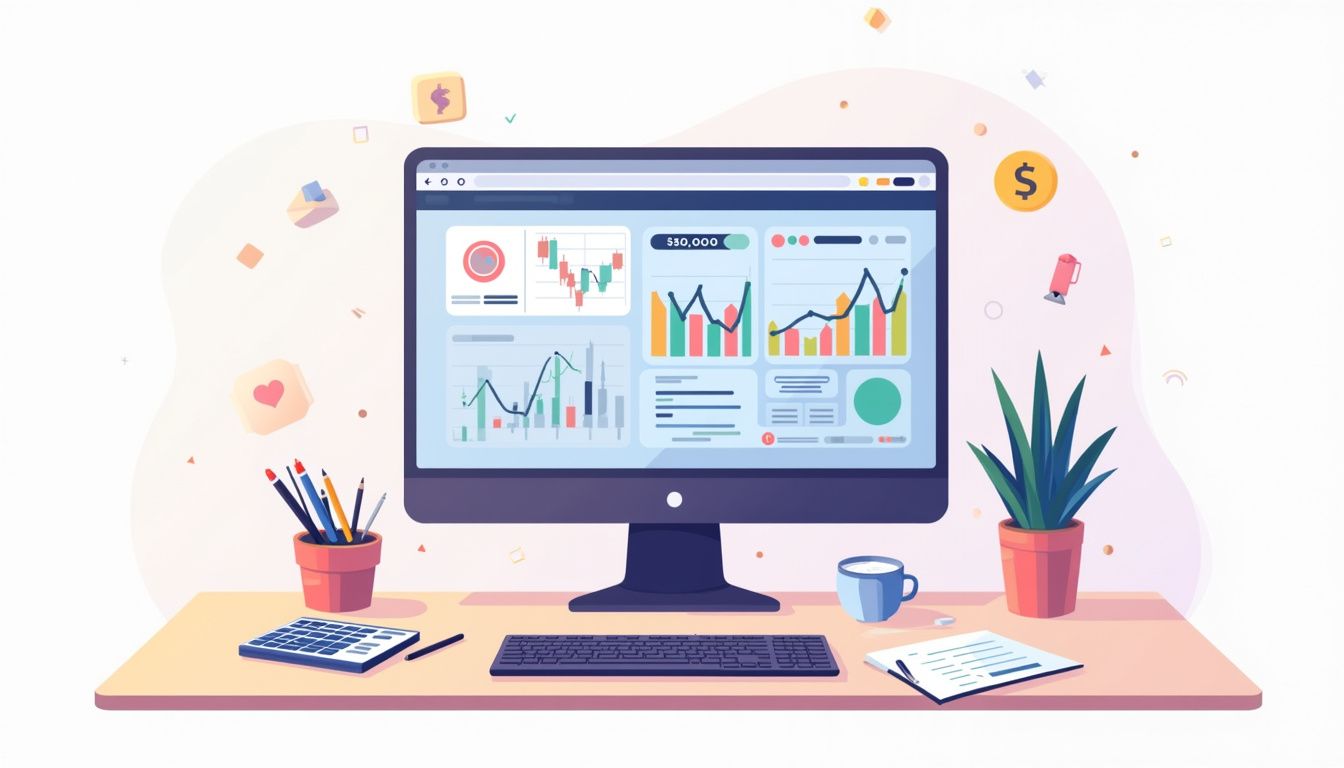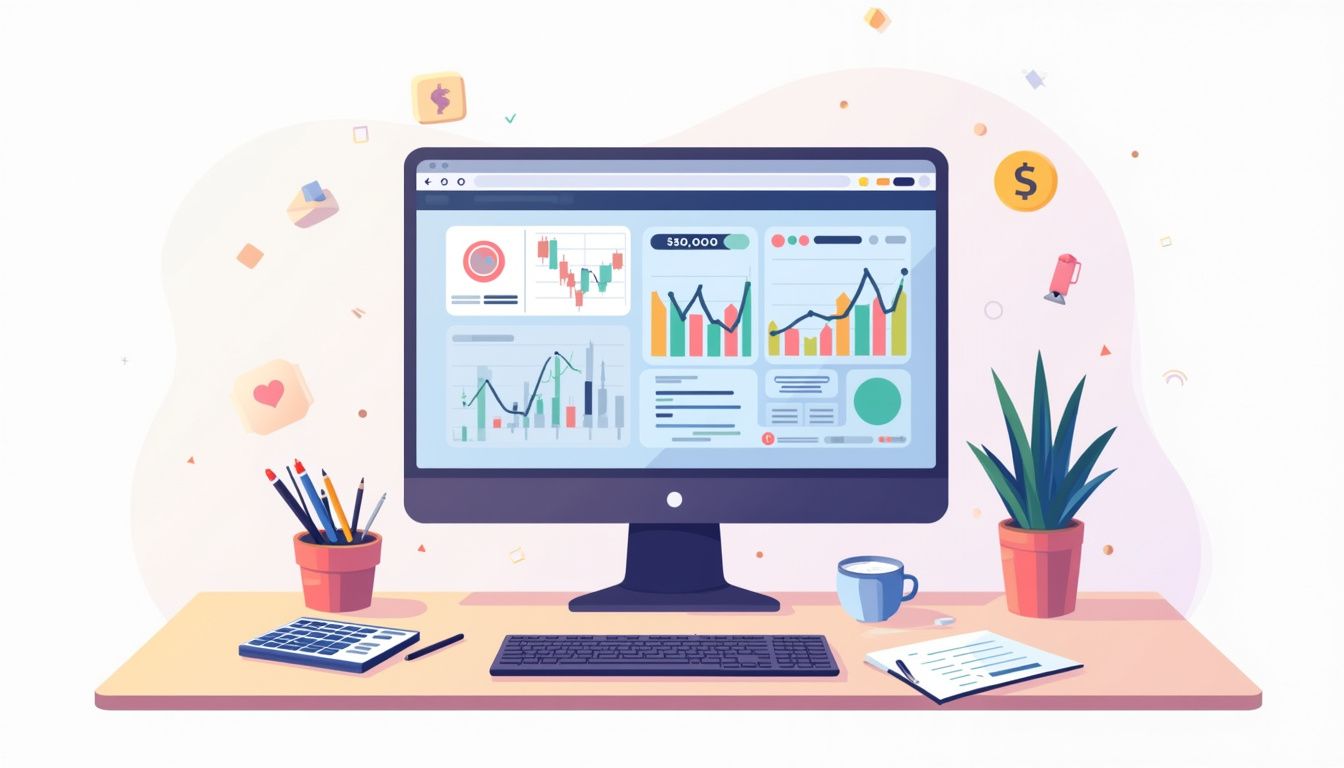

Struggling to understand what does free margin mean in forex trading? Free margin is the money in your trading account available for opening or holding positions. This guide will explain its purpose, how it works, and why it’s key to managing trades effectively.
Keep reading to protect your investments and avoid costly mistakes!
 Free margin in forex trading is the amount of money in your trading account that you can use for opening new positions or as a cushion against losses. It comes from the difference between your equity and the used margin.
Free margin in forex trading is the amount of money in your trading account that you can use for opening new positions or as a cushion against losses. It comes from the difference between your equity and the used margin.
Equity combines your account balance and any unrealised profit or loss from open trades, while used margin refers to the funds locked up for existing positions.
A free margin of zero means you cannot place additional trades, leaving no buffer if prices move against you. For example, if your equity is £5,000 and £2,000 is tied up as used margin, then £3,000 remains as free margin.
Maintaining a healthy level protects you from reaching critical points like a **margin call**, where brokers may close trades to prevent negative balances.

To calculate free margin, you need to assess your trading account’s equity and evaluate the used margin. This calculation helps determine how much usable margin remains for opening new positions or managing trades.
Your equity combines your account balance with the profit or loss from open positions. If there are no active trades, equity equals your trading account balance. For example, an account balance of $1,000 without floating profits or losses gives you $1,000 in equity.
If positions remain open, adjust for unrealised gains or losses. Add any profits to the current balance or subtract any losses. Imagine a $1,000 account where a position earns £50—it raises your equity to $1,050 (£850).
This value determines usable margin and impacts decisions like opening new trades within margin requirements set by brokers regulated under financial authorities like the FCA.
Subtract the used margin from your equity to calculate free margin. For instance, if your trading account has an equity of $1,000 and a used margin of $400, your free margin will be $600 ($1,000 – $400).
This step shows how much usable margin you have for opening new positions.
Keep in mind that the used margin is tied to existing trades. Higher equity or lower required margins provide healthier levels of free margin. Monitoring this helps avoid a potential margin call during volatile market conditions like sudden exchange rate shifts.
Free margin and used margin are key components in forex trading. Understanding the difference makes it easier to manage your trades effectively. Below is a clear comparison between the two concepts:
| Aspect | Free Margin | Used Margin |
|---|---|---|
| Definition | The money available in your account for new trades. | The money locked to maintain current open trades. |
| Calculation | Equity minus used margin. | Total margin from all open positions. |
| Impact on Trading | Allows you to open additional trades or absorb losses. | Limits your buying power as it is tied to open trades. |
| Example (Trader Joe) | If equity is $10,000 and used margin is $4,800, free margin equals $5,200. | If equity drops to $2,280 and used margin remains $4,800, it stays tied to current positions. |
| Changes With Market | Increases with floating profits, decreases with floating losses. | Does not fluctuate unless trades are added or closed. |
Free margin represents growth and flexibility. Used margin acts as a safety buffer for your broker. Balancing these ensures better trading sustainability.https://m.youtube.com/watch?v=b8j6s0Z8s18&pp=ygUJI2xhdmVyYWdl
Free margin directly affects your trading choices by determining the positions you can open or hold. A low free margin limits your ability to enter new trades, forcing you to rely on existing ones for potential profits.
For example, if your account balance is £5,000 but losses total £3,800 with a used margin of £2,000, your free margin stands at zero. This scenario triggers a margin call and requires immediate action.
Trading decisions often shift under pressure when the margin level drops below 100%. You might need to top up your account or close open positions to restore a healthy usable margin.
Without sufficient free funds in place, the risk of liquidation rises sharply as price movements threaten available collateral. Prioritising strong risk management ensures that leveraged products like CFDs remain sustainable in volatile markets.
Maintaining a healthy free margin is crucial for effective forex trading. Following these tips can help protect your trading account and manage risks better.
The next section will clarify the differences between free margin and used margin in forex trading decisions.
Understanding free margin is vital for managing your trading account effectively. You have learned its definition, how to calculate it, and why maintaining a healthy margin level matters.
Applying these tips can help you avoid risks like a margin call and make smarter trading decisions. Use strong risk management strategies to protect your investments and keep your trades on track.
Stay informed, take action, and aim for consistent growth in forex trading success!
For further insights into trading variances, explore our detailed guide on what deviation means in Forex trading.
Free margin refers to the amount of money in your trading account that is available for opening new positions or maintaining existing ones. It is the difference between your account balance and the used margin.
A margin call happens when your free margin drops too low due to losses on open positions. To avoid this, you need to maintain a healthy margin level by monitoring your trades closely.
Risk management helps protect your trading account from losing all funds during volatile market conditions. By managing position sizes and setting stop-loss orders, you can preserve usable margin effectively.
Understanding required margins ensures you know how much capital will be tied up as collateral for each trade, helping you plan better and avoid exceeding your account’s capacity.
Yes, negative balance protection limits potential losses so they do not exceed the funds in your trading account, reducing liability during extreme market movements.
Yes, seeking independent financial advice is crucial because high leverage increases both profit potential and the risk of losing money quickly when trading complex instruments like CFDs or foreign exchange contracts.